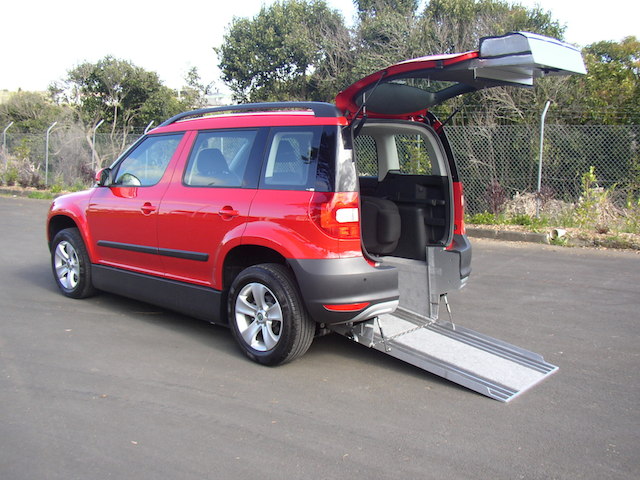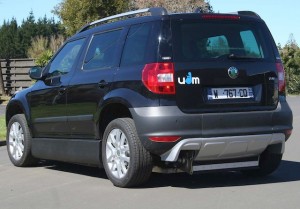
Above: The converted Skoda Yeti with its wheelchair ramp
The New Zealand Transport Agency may face a potential showdown with a former Ferrari engineer over its ban on NZ-built, self-drive wheelchair-access vehicles.
Retired chief technical officer Luigi Marmaroli has tested in Italy one of the banned vehicles now completing European homolgation – and he told the New Zealander who built them that it was fit for roads in the European Union.
Marmaroli is expected to submit his findings to the NZTA, saying it was misinformed by its certifying body, the Low Volume Vehicle Technical Association. The LVVTA – set up in the 1990s to certify caravans, hobby cars and hot-roads for use on roads in NZ – in June last year declared the vehicles unsafe.
Both government bodies had earlier certified the vehicles as safe. Now Roger Phillips, whose company U Drive Mobility (UDM) built them at a plant in Waiuku, will ask Marmaroli to tell the NZ Government where the LVVTA and NZTA went wrong. Phillips says NZTA accepted the LVVTA findings without detailed checks and it now has professional advice that casts serious doubt on the issues raised by LVVTA.

Marmaroli has joined the board of UDM’s European operation as a production engineering consultant. He is a celebrated automotive figure in Italy. He was trained at Ferrari, appointed technical director of the Alfa Romeo Formula One team in the early 1980s, and soon after became chief engineer of Lamborghini, where he remained until 1996.
He is perhaps best known for directing development of the 340km/h supercar Lamborghini Diablo, where much use was made of composites, universally recognised as lighter but stronger than steel.
And it is composites that are at the heart of the ban on Phillips’ vehicles. He cuts the steel floor out of the Skoda Yeti donor car, replaces it with an aluminium honeycomb composite, and re-designs the rear suspension to accommodate the ramp.
A French Government testing facility has passed the structural integrity of the vehicles for EU certification and Phillips’ French distribution company ACA – a division of UDM Europe – has been given a NZ$600,000 provincial government grant to set up an assembly plant near Bordeaux.
But the LVVTA insists that the converted Skodas are not safe for NZ roads. NZTA operations support manager Mark Kinvig told the NZ Herald that there were still serious safety issues with the composite floor and the rear suspension. “The removal of the original floor weakens the overall structure of the vehicle … this significant modification may also affect safety features such as seatbelt anchorages and airbags,” Kinvig said.
Phillips says both LVVTA and NZTA admit they have no certification standards for composities. “How can they rule a composite floor unsafe if they have no rule book or performance criteria?” he says. “UDM will be the first NZ company to meet European test standards for wheelchair-adapted automobiles – every ordinary European passenger car on the road in New Zealand has met the same standard.
“The ban on UDM displays a total lack of understanding of commercial realities and ability to correctly assess modern engineering issues and practices, let alone wheelchair-user’s transport needs.”
• Philips converted 10 Skoda Yetis, priced between $85,000 and $100,000. Wheelchair users can drive straight into the driver’s seat via a ramp at the rear. The first was sold to West Australia – where it is still in use – and the other nine in New Zealand, where it is banned. He built two skeleton test cars and a complete homologation car for testing in France. Before the ban the NZ Government made available a $400,000 grant through its Callaghan Innovation programme for Phillips to seek European homologation. Once the ban was imposed, the Government withdrew the offer, leaving UDM more than $140,000 out of pocket.

